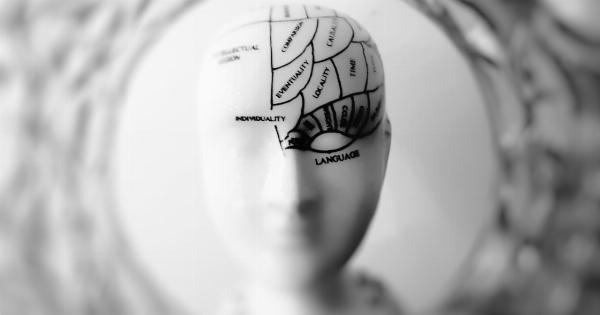Alzheimer’s disease is a progressive neurological disorder that affects millions of people worldwide. It is characterized by memory loss, cognitive decline, and difficulty in performing daily activities.
While there is currently no cure for Alzheimer’s, research has shown that certain lifestyle modifications, including physical activity, can significantly reduce the risk of developing the disease. In this article, we will explore why physical activity matters for Alzheimer’s prevention and how incorporating regular exercise into your routine can have a positive impact on brain health.
The Link Between Physical Activity and Alzheimer’s
Several studies have established a strong correlation between physical activity and a reduced risk of Alzheimer’s disease.
Engaging in regular exercise has been found to enhance cognitive function, improve memory, and reduce the risk of cognitive decline associated with aging.
A study published in the Journal of the American Medical Association (JAMA) found that individuals who engaged in moderate-intensity exercise, such as brisk walking or cycling, for at least 150 minutes per week had a 45% lower risk of developing Alzheimer’s compared to those who were sedentary. The study concluded that physical activity is a potent protective factor against the disease.
Furthermore, research has shown that physical activity can help delay the onset of Alzheimer’s symptoms in individuals already experiencing mild cognitive impairment.
A study published in the Archives of Neurology revealed that participants with mild cognitive impairment who engaged in a regular exercise program experienced slower decline in cognitive function compared to those who did not exercise.
How Physical Activity Benefits the Brain
The precise mechanisms through which physical activity protects against Alzheimer’s disease are still being studied. However, researchers have identified several ways in which exercise promotes brain health:.
1. Increased Blood Flow
Physical activity increases blood flow to the brain, delivering vital oxygen and nutrients that are essential for its proper functioning.
This improved blood circulation nourishes the brain cells and promotes the growth of new blood vessels, thereby enhancing brain health and reducing the risk of Alzheimer’s.
2. Neurogenesis
Exercise stimulates the production of new neurons in the brain, a process known as neurogenesis. This neuroplasticity plays a crucial role in learning, memory formation, and overall cognitive function.
By promoting neurogenesis, physical activity supports the maintenance and growth of brain cells, reducing the risk of cognitive decline.
3. Reduction of Amyloid Plaques
One of the hallmarks of Alzheimer’s disease is the accumulation of beta-amyloid plaques in the brain, which disrupt normal brain function.
Regular physical activity has been shown to reduce the build-up of these plaques and promote their clearance, protecting against Alzheimer’s development.
4. Decreased Inflammation
Chronic inflammation in the brain is associated with increased risk of Alzheimer’s disease. Exercise has been found to reduce inflammation throughout the body, including in the brain.
By mitigating inflammation, physical activity helps create a healthier and more resilient brain environment.
5. Enhanced Brain Chemicals
The brain releases various chemicals, such as neurotransmitters and growth factors, that are crucial for proper brain function.
Exercise promotes the release of these beneficial substances, including brain-derived neurotrophic factor (BDNF), which supports neuronal survival and growth, and dopamine, a neurotransmitter associated with mood regulation and cognitive function.
How to Incorporate Physical Activity into Your Routine
Engaging in regular physical activity doesn’t mean you have to join a gym or start intense workouts. Simple lifestyle changes can make a significant difference in reducing your risk of developing Alzheimer’s disease.
Here are some tips to incorporate physical activity into your daily routine:.
1. Brisk Walking or Jogging
Walking is an excellent form of exercise that can be easily incorporated into your day. Aim for brisk walks or consider jogging if you are physically able to do so. Start with shorter durations and gradually increase the distance and intensity over time.
2. Dancing
Dancing is not only a fun way to exercise but also promotes cognitive health. Whether it’s ballroom dancing, Zumba, or simply dancing to your favorite tunes at home, moving to the music can provide both physical and mental stimulation.
3. Cycling
Get on your bike and enjoy the benefits of cycling. It is a low-impact cardiovascular exercise that can be done outdoors or indoors on a stationary bike. Cycling not only improves physical fitness but also helps maintain brain health.
4. Gardening
Gardening is a therapeutic activity that also allows you to engage in physical exercise. Digging, planting, and tending to plants provides a full-body workout while connecting with nature.
5. Yoga or Tai Chi
These mind-body practices offer numerous physical and mental benefits. Yoga and Tai Chi focus on gentle movements, stretching, and deep breathing, promoting relaxation, balance, and flexibility.
6. Strength Training
Incorporating strength training exercises, such as using resistance bands or lifting weights, helps build muscle strength, improves bone density, and enhances overall physical well-being.
7. Group Activities
Joining group activities, such as aerobics classes, sports leagues, or hiking clubs, not only adds a social component to your physical activity but also keeps you motivated and accountable.
Conclusion
Physical activity is a powerful tool in the prevention of Alzheimer’s disease.
By incorporating regular exercise into your routine, you can improve brain health, enhance cognitive function, and reduce the risk of cognitive decline associated with aging. Whether it’s walking, dancing, gardening, or participating in group activities, find an activity that you enjoy and make it a priority. Remember, every step counts when it comes to promoting brain health and warding off Alzheimer’s disease.





























